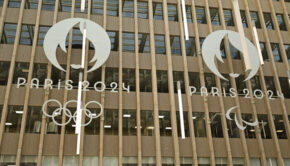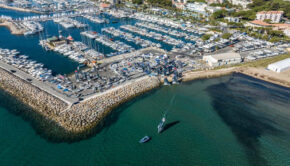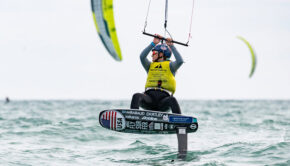Complicated Sailing at Rio Games
Published on August 11th, 2016
By Christopher Clarey, The New York Times
After all the concern about what might be floating in Guanabara Bay during the Olympics, it was finally time on Monday for the sailors to start competing. When they got to Marina da Glória, they were much more worried about how difficult the job was going to be than about how dirty the job was going to be.
“It’s super challenging, this place, and I’m not talking about the pollution,” said Juan Ignacio Maegli, a three-time Olympian from Guatemala who raced in the men’s laser event Monday. “It’s especially challenging in the course inside the bay, the course where we’re today. There’s lots of current, and with the high mountains, the wind shifts a lot.”
The bay is a natural amphitheater: a spectacular one surrounded by 1,299-foot Sugarloaf Mountain and other granite monoliths, as well as beaches and man-made landmarks, including the Rio-Niterói Bridge, the Santos Dumont Airport and numerous municipalities.
It is a particularly complex environment in which to race, made all the more complex because the mouth of the bay leading to the Atlantic Ocean is narrow and contains a small island.
“That little island has a great effect on the current that comes in and out, and really makes it tricky,” said David Dellenbaugh, a tactical adviser for the United States Olympic sailing team. “There are a lot of back eddies and stuff around that island, so when you are on those courses that are close to it, that makes a big difference.”
There are seven courses in use at these Olympics, and although the focus has been squarely on Guanabara Bay because of pollution concerns, three of the courses are in the open ocean off the city of Niterói and the Atlantic beach of Copacabana. Not all of the Olympic classes will compete outside the bay, but the majority will.
“From a tactical point of view, Rio is one of the most challenging venues to sail at, and the main reason is these two different types of racecourses,” said Josh Adams, the managing director of United States Olympic Sailing. “Inside the bay, it’s a current-driven racecourse. It’s short chop, not a lot of big waves, and a shifting wind because it’s inside the bay and the wind is coming over some land.
“In contrast to that, there are the three ocean racecourses, which are exposed to the ocean swell, so the waves can be quite large and round and the breeze more steady. There is certainly current out there, but it’s not as complicated. So Rio really demands a complete sailor, and ultimately, what these Olympic Games will test is who is the most complete sailor.”
The importance of local knowledge appears to have its limits. Robert Scheidt, a Brazilian star who is back in the laser class to compete in his sixth Olympics, finished 23rd out of 46 competitors in the first race Monday, although he did bounce back to win the second race. There will be 10 preliminary races in all before the medal races next week.
“The mountains on the Niterói course were really affecting the wind, but that’s part of the competition,” Scheidt said. “Everyone knew the conditions would be variable.” – Full Story









 We’ll keep your information safe.
We’ll keep your information safe.